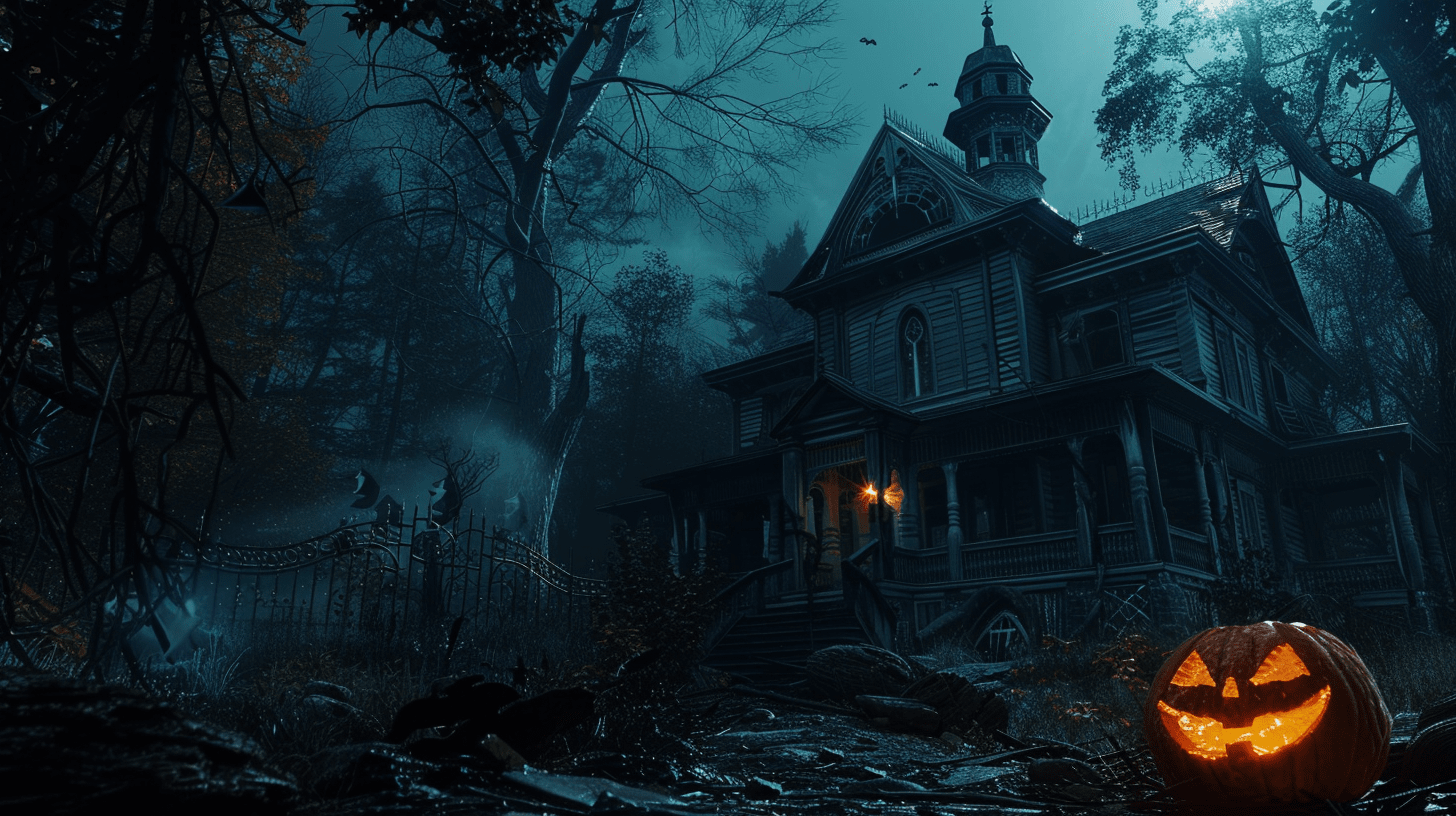What's After the Blog?
Culture • Criticism
The Influence of Classical Literature on Modern Cinema
Explore the complexities of adapting classical literature to film, from condensing epic tales to interpreting complex themes, and discover creative solutions employed by filmmakers in this exploration of cinematic adaptations.
November 1, 2024

Movies mentioned in this article
The Influence of Classical Literature on Modern Cinema
The timeless allure of classical literature has left an indelible mark on the world of modern cinema, where the richness of storytelling and the complexities of human nature converge. In this exploration of the profound influence of classical literature on the silver screen, we embark on a journey through the realms of adaptation, artistry, and cinematic mastery.
Introduction
Classical literature, characterized by enduring themes, well-drawn characters, and timeless narratives, has always been a source of inspiration for artists across various mediums. As we delve into its impact on modern cinema, it becomes evident that these literary treasures continue to breathe life into the world of filmmaking.
In the following sections, we will uncover the intricate relationship between classical literature and cinema, beginning with the art of adaptation and the challenges it presents to filmmakers.
The Art of Adaptation
Adapting a revered literary work into a cinematic masterpiece is a delicate balancing act that requires a deep understanding of the source material and a keen cinematic sensibility. Filmmakers must navigate the fine line between staying faithful to the original text and reimagining it for the visual medium.
- Preserving Essence: One of the primary challenges of adaptation is preserving the essence of the source material. Filmmakers must capture the core themes, characters, and emotions that make the literary work a classic. A successful adaptation maintains the soul of the story while embracing the cinematic language.
- Creative Interpretation: While faithfulness to the source material is essential, creative interpretation is equally vital. Filmmakers often need to make artistic choices that enhance the visual storytelling experience. This may involve altering the narrative structure, updating settings, or reimagining characters to suit the cinematic context.
- Balancing Act: Achieving the right balance between fidelity and innovation is crucial. Too much deviation from the original may alienate literary purists, while excessive adherence may limit the cinematic potential. Finding this equilibrium is an art in itself.
To illustrate the art of adaptation, we can look at cinematic gems like “Pride and Prejudice” and “To Kill a Mockingbird.” These films not only pay homage to their literary origins but also introduce audiences to new dimensions of storytelling through the lens of cinema.
In the sections that follow, we will explore iconic literary adaptations, recurring themes and motifs, character portrayals, cinematic techniques, and the lasting impact of classical literature on contemporary filmmaking. Through this exploration, we will gain a deeper appreciation for the enduring synergy between literature and cinema.
Iconic Literary Adaptations
In the realm of cinematic adaptations, certain films stand as shining examples of how classical literature can seamlessly transition onto the silver screen, captivating audiences with their visual interpretations of timeless tales. These adaptations not only pay homage to the literary classics but also serve as a bridge for new generations of viewers to connect with the profound stories of the past.
Literary Classics Reimagined
- Pride and Prejudice: Jane Austen’s timeless exploration of love, class, and societal norms found its cinematic counterpart in Joe Wright’s 2005 adaptation. Keira Knightley’s portrayal of the headstrong Elizabeth Bennet and Matthew Macfadyen’s Mr. Darcy brought new life to these beloved characters. The lush English countryside and opulent ballroom scenes captured the essence of Austen’s world, making it accessible to a modern audience.
- To Kill a Mockingbird: Harper Lee’s seminal novel, a poignant examination of racial injustice, found cinematic resonance in the 1962 film directed by Robert Mulligan. Gregory Peck’s portrayal of Atticus Finch, a principled lawyer defending an innocent black man, earned him an Academy Award. The film’s impact on raising awareness about social issues remains enduring.
- The Great Gatsby: F. Scott Fitzgerald’s exploration of the American Dream and the excesses of the Jazz Age was brought to life in Baz Luhrmann’s 2013 adaptation. Leonardo DiCaprio’s enigmatic Jay Gatsby and Carey Mulligan’s Daisy Buchanan epitomized the glamour and disillusionment of the era. Luhrmann’s visually extravagant style transported viewers to the lavish parties of Long Island, mirroring the opulence of the Roaring Twenties.
Timeless Themes and Motifs
Classical literature endures because of its exploration of universal themes and motifs that resonate across generations. When these themes are successfully translated to the screen, they capture the hearts and minds of viewers worldwide.
- Love and Prejudice: The theme of love conquering prejudice, central to Jane Austen’s “Pride and Prejudice,” remains a perennial favorite. Audiences connect with the idea that true love can break down societal barriers and transform individuals. The film adaptation beautifully captures the evolving dynamics between Elizabeth and Mr. Darcy.
- Justice and Morality: Harper Lee’s “To Kill a Mockingbird” delves into the pursuit of justice and the moral obligation to confront racism. The film adaptation amplified the impact of the story, driving home the importance of standing up for what is right, even in the face of adversity.
- The Illusion of the American Dream: F. Scott Fitzgerald’s critique of the American Dream’s elusive nature and the consequences of relentless pursuit is a theme that resonates with contemporary audiences. “The Great Gatsby” film adaptation captures the allure and hollowness of materialism, inviting viewers to reflect on the pursuit of happiness.
These iconic literary adaptations serve as a testament to the enduring power of classical literature to inspire and resonate with audiences across time. As we continue our exploration, we will delve deeper into character portrayals, cinematic techniques, and the profound influence of these timeless themes on cinematic storytelling.
Cinematic Character Portrayals
One of the most compelling aspects of adapting classical literature to film is the opportunity to bring beloved literary characters to life, allowing them to evolve from words on a page into dynamic figures on the screen. These adaptations often hinge on the strength of character portrayals, as actors and directors work to capture the essence of these iconic literary personas.
!Mr. Darcy
Capturing Complex Characters
- Mr. Darcy (Pride and Prejudice): Colin Firth’s portrayal of Mr. Darcy in the 1995 BBC adaptation of “Pride and Prejudice” remains etched in the annals of cinematic history. His brooding and enigmatic portrayal perfectly encapsulated Darcy’s complex character, drawing viewers into the character’s inner turmoil and transformation. Firth’s iconic lake scene, where he emerges dripping wet in a white shirt, has become a symbol of romantic heroism.
- Atticus Finch (To Kill a Mockingbird): Gregory Peck’s portrayal of Atticus Finch in the 1962 adaptation of Harper Lee’s novel is widely regarded as one of the most powerful performances in film history. Peck embodied Atticus’s unwavering moral compass and quiet dignity, delivering a compelling portrayal of a father who serves as a moral compass in a racially divided society.
- Jay Gatsby (The Great Gatsby): Leonardo DiCaprio’s portrayal of Jay Gatsby in Baz Luhrmann’s adaptation added a layer of complexity to the character. DiCaprio conveyed Gatsby’s charm, idealism, and underlying desperation with precision. His ability to capture the enigmatic allure of the character allowed viewers to empathize with Gatsby’s relentless pursuit of a dream.
The Art of Transformation
Successful character portrayals in film involve more than just reciting lines; they require actors to embody the essence of the characters they portray. In these adaptations, we witness actors stepping into the shoes of literary legends and delivering performances that breathe life into the stories.
- The Complexity of Mr. Darcy: Colin Firth’s portrayal of Mr. Darcy brings out the complexity of a character torn between societal expectations and his true feelings. His transformation from aloof aristocrat to a man deeply in love is a testament to Firth’s acting prowess.
- The Moral Integrity of Atticus Finch: Gregory Peck’s Atticus Finch is a paragon of moral integrity, and Peck’s portrayal solidified the character’s status as a cinematic hero. His calm determination in the face of injustice is a stirring example of the power of character-driven storytelling.
- The Elusiveness of Jay Gatsby: Leonardo DiCaprio’s Jay Gatsby captures the enigmatic allure of a character who embodies the American Dream. DiCaprio’s portrayal reveals the underlying fragility of Gatsby’s facade and the tragedy of his unattainable aspirations.
These character portrayals not only breathe life into classical literature but also offer fresh perspectives on well-known figures. As we explore the influence of classical literature on modern cinema, we will continue to examine the nuances of character development and the impact of these performances on storytelling.
Visualizing Classic Settings
While character portrayals play a crucial role in adapting classical literature to film, the settings in which these stories unfold are equally significant. Filmmakers must recreate the rich and vivid worlds described in classic literature, transporting viewers to different eras and places. Let’s delve into the art of visualizing classic settings in modern cinema.
Meticulous Attention to Detail
- Manderley Estate (Rebecca): In Daphne du Maurier’s novel “Rebecca,” Manderley is described as a sprawling estate by the sea, shrouded in mystery and Gothic elegance. In Alfred Hitchcock’s 1940 film adaptation, the filmmakers meticulously recreated Manderley, capturing its imposing architecture and eerie beauty. The grandeur of Manderley becomes an integral part of the story, reflecting the secrets and hidden past of its inhabitants.
- The Shire (The Lord of the Rings): J.R.R. Tolkien’s Middle-earth is a richly imagined world, and Peter Jackson’s film adaptations, particularly “The Lord of the Rings” trilogy, brought this fantastical realm to life. The depiction of The Shire, home to the hobbits, is a prime example of the filmmakers’ dedication to detail. The lush landscapes, quaint hobbit holes, and idyllic countryside transport viewers into Tolkien’s world with remarkable authenticity.
!The Shire
- Victorian London (Sherlock Holmes): Arthur Conan Doyle’s stories featuring Sherlock Holmes are set in the gaslit streets of Victorian London. Guy Ritchie’s 2009 adaptation, starring Robert Downey Jr. as Holmes, vividly captures the atmosphere of the era. The filmmakers recreated the bustling streets, foggy alleyways, and opulent interiors of Victorian London, immersing viewers in the detective’s world.
Evoking Atmosphere and Mood
The visual representation of classic settings in film goes beyond mere aesthetics; it serves to enhance the mood and atmosphere of the narrative. Filmmakers use settings to convey emotions, create tension, and establish a sense of time and place.
- Manderley’s Haunting Beauty: The portrayal of Manderley in “Rebecca” is not just about recreating a grand estate; it’s about capturing the haunting beauty that conceals dark secrets. The estate’s Gothic architecture and the lush, overgrown gardens set the stage for a tale of intrigue and suspense.
- The Shire’s Tranquility: The Shire in “The Lord of the Rings” represents a tranquil and idyllic world untouched by the chaos of Middle-earth. Its depiction evokes a sense of nostalgia and longing, highlighting the contrast with the epic adventures that lie ahead.
- Victorian London’s Grit and Grime: Victorian London in the “Sherlock Holmes” adaptation serves as a backdrop for Holmes’s investigations. The gritty streets and atmospheric locales convey a sense of danger and intrigue, immersing the audience in the world of crime-solving.
In our exploration of the influence of classical literature on modern cinema, the visual aspects of these adaptations take center stage. The meticulous attention to detail and the ability to evoke the atmosphere of the original literary works contribute to the immersive experience of cinematic storytelling.
Adaptation Challenges and Creative Solutions
Adapting classic literature to the silver screen presents filmmakers with unique challenges. These challenges often involve condensing lengthy narratives, interpreting complex themes, and staying faithful to the source material. In this section, we’ll explore the intricacies of translating classic literature into film and the creative solutions employed by filmmakers.
Condensing Epic Tales
One of the foremost challenges in adapting classical literature is the task of condensing epic tales into a feature-length film. Many classic novels, such as Leo Tolstoy’s “War and Peace” or Victor Hugo’s “Les Misérables,” span hundreds of pages and encompass a multitude of characters and subplots. Filmmakers must distill these sprawling narratives into a manageable runtime while preserving their essence.
- War and Peace (1956): King Vidor’s adaptation of Tolstoy’s “War and Peace” faced the daunting task of capturing the grandeur and complexity of the novel. While the film couldn’t include every character and subplot, it focused on the central themes of love and war. Through skillful editing and a strong central narrative, the film succeeded in conveying the epic scope of the original work.
- Les Misérables (2012): Tom Hooper’s musical adaptation of Hugo’s masterpiece “Les Misérables” had the challenge of translating a lengthy novel into a musical format. To streamline the story, the filmmakers relied on powerful musical performances to convey the characters’ emotions and motivations. The result was a visually stunning and emotionally resonant adaptation.
Interpreting Complex Themes
Classic literature often explores intricate themes and philosophical concepts. Translating these themes to the visual medium of film requires a deep understanding of the source material and a keen sense of storytelling.
- Dostoevsky’s Existentialism (The Brothers Karamazov): Fyodor Dostoevsky’s novels, including “The Brothers Karamazov,” delve into existentialism, morality, and the human condition. Richard Brooks’ 1958 adaptation managed to capture the philosophical depth of the novel by emphasizing the characters’ internal struggles and ethical dilemmas.
- Metaphysical Horror (The Picture of Dorian Gray): Oscar Wilde’s “The Picture of Dorian Gray” explores themes of vanity, morality, and the consequences of a hedonistic lifestyle. Albert Lewin’s 1945 film adaptation embraced the metaphysical horror elements of the novel, using visual effects to portray the aging portrait as it reflects Dorian’s moral decay.
Staying Faithful to the Source
While creative liberties are often taken in film adaptations, it’s crucial to strike a balance between artistic interpretation and staying faithful to the source material. Deviating too far from the original work can alienate fans of the classic literature.
- Pride and Prejudice (2005): Joe Wright’s adaptation of Jane Austen’s “Pride and Prejudice” received critical acclaim for its faithfulness to the novel’s spirit. While some minor changes were made for cinematic purposes, the film retained the wit, romance, and social commentary of Austen’s work.
- Moby-Dick (1956): John Huston’s adaptation of Herman Melville’s “Moby-Dick” faced the challenge of condensing the novel’s dense prose and philosophical musings. While the film omitted certain subplots and characters, it preserved the central themes of obsession and the clash between man and nature.
In navigating the complexities of adapting classical literature to film, filmmakers must balance the need for brevity with the desire to preserve the essence of the original work. Creative solutions, such as focused narratives and visual symbolism, play a pivotal role in translating these timeless tales to the cinematic medium.
Continue reading

What's After the Movie?
Not sure whether to stay after the credits? Find out!
Check out our other apps:
Actors
Companies
Latest Movies
© 2025 What's After the Movie. All rights reserved.













